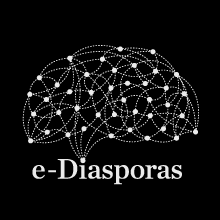Niccolò Guicciardini: Isaac Newton on Mathematical Certainty and Method (2009)
Filed under book | Tags: · history of mathematics, history of science, mathematics, philosophy of science

Historians of mathematics have devoted considerable attention to Isaac Newton’s work on algebra, series, fluxions, quadratures, and geometry. In Isaac Newton on Mathematical Certainty and Method, Niccolò Guicciardini examines a critical aspect of Newton’s work that has not been tightly connected to Newton’s actual practice: his philosophy of mathematics.
Newton aimed to inject certainty into natural philosophy by deploying mathematical reasoning (titling his main work The Mathematical Principles of Natural Philosophy most probably to highlight a stark contrast to Descartes’s Principles of Philosophy). To that end he paid concerted attention to method, particularly in relation to the issue of certainty, participating in contemporary debates on the subject and elaborating his own answers. Guicciardini shows how Newton carefully positioned himself against two giants in the “common” and “new” analysis, Descartes and Leibniz. Although his work was in many ways disconnected from the traditions of Greek geometry, Newton portrayed himself as antiquity’s legitimate heir, thereby distancing himself from the moderns.
Guicciardini reconstructs Newton’s own method by extracting it from his concrete practice and not solely by examining his broader statements about such matters. He examines the full range of Newton’s works, from his early treatises on series and fluxions to the late writings, which were produced in direct opposition to Leibniz. The complex interactions between Newton’s understanding of method and his mathematical work then reveal themselves through Guicciardini’s careful analysis of selected examples. Isaac Newton on Mathematical Certainty and Method uncovers what mathematics was for Newton, and what being a mathematician meant to him.
Publisher MIT Press, 2009
Transformations: Studies in the History of Science and Technology Series
ISBN 0262013177, 9780262013178
422 pages
Joseph Michael Reagle, Jr.: Good Faith Collaboration: The Culture of Wikipedia (2010)
Filed under book | Tags: · citizendium, collaboration, wiki, wikipedia

Wikipedia, the online encyclopedia, is built by a community–a community of Wikipedians who are expected to “assume good faith” when interacting with one another. In Good Faith Collaboration, Joseph Reagle examines this unique collaborative culture.
Wikipedia, says Reagle, is not the first effort to create a freely shared, universal encyclopedia; its early twentieth-century ancestors include Paul Otlet’s Universal Repository and H. G. Wells’s proposal for a World Brain. Both these projects, like Wikipedia, were fuelled by new technology–which at the time included index cards and microfilm. What distinguishes Wikipedia from these and other more recent ventures is Wikipedia’s good-faith collaborative culture, as seen not only in the writing and editing of articles but also in their discussion pages and edit histories. Keeping an open perspective on both knowledge claims and other contributors, Reagle argues, creates an extraordinary collaborative potential.
Wikipedia’s style of collaborative production has been imitated, analyzed, and satirized. Despite the social unease over its implications for individual autonomy, institutional authority, and the character (and quality) of cultural products, Wikipedia’s good-faith collaborative culture has brought us closer than ever to a realization of the century-old pursuit of a universal encyclopedia.
Foreword by Lawrence Lessig
Publisher MIT Press, 2010
History and Foundation of Information Science Series
ISBN 0262014475, 9780262014472
244 pages
Dana Diminescu (ed.): Social Science Information journal, Special issue: Diasporas on the Web (2012)
Filed under journal | Tags: · colonialism, diaspora, egypt, france, india, internet, lebanon, macedonia, nepal, palestine, tamil, tunisia, virtual communities, web, yugoslavia

“One of the major changes affecting diasporas the world over since the 1980s has been the increasing number of communities scattered throughout physical space, along with new forms of presence, regrouping, interaction and mobilization within digital territories.
This change calls for a renewal in epistemological approaches. The topics under study, as well as the conceptual and methodological tools used to analyse them, need to be reconsidered in the face of this evolution of diasporas. The articles published in this issue of SSI1 bear witness to such an effort: researchers and engineers involved in the e-Diasporas Atlas project have sought to find the most appropriate concepts, tools and methods to explore the Web of diasporas, based on a number of case studies. This work represents a vast new area of investigation, which is still under way.
In this introduction, we examine the different conceptual tools used during the research, analyse their relevance for the different diasporic communities on the Web and present the methodological chain developed within the e-Diasporas Atlas project as well as the most important findings.” (from the Introduction)
With contributions by Dana Diminescu, Anat Ben-David, Yann Scioldo-Zürcher, Houda Asal, Marta Severo and Eleonora Zuolo, Teresa Graziano, Ingrid Therwath, Priya Kumar, Tristan Bruslé, Kristina Balalovska, Francesco Mazzucchelli
Social Science Information, December 2012; 51 (4)
Publisher: SAGE, on behalf of Maison des Sciences de l’Homme, Paris
ISSN 0539-0184
245 pages
via ach
e-Diasporas Atlas project page (includes working papers and interactive graph)
Comment (0)
